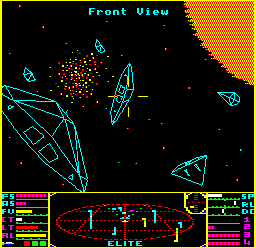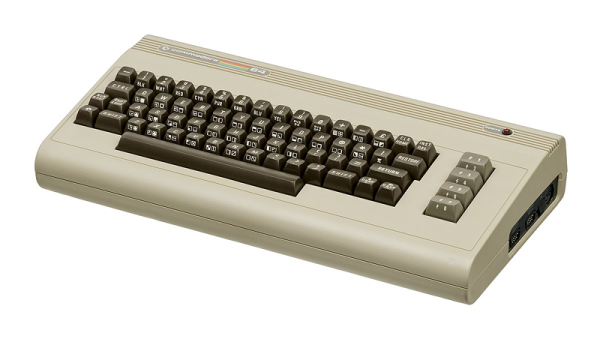Early Monday morning, while many of us will be putting the finishing touches — or just beginning, ahem — on our Christmas preparations, solar scientists will hold their collective breath as they wait for word from the Parker Solar Probe’s record-setting passage through the sun’s atmosphere. The probe, which has been in a highly elliptical solar orbit since its 2018 launch, has been getting occasional gravitational nudges by close encounters with Venus. This has moved the perihelion ever closer to the sun’s surface, and on Monday morning it will make its closest approach yet, a mere 6.1 million kilometers from the roiling photosphere. That will put it inside the corona, the sun’s extremely energetic atmosphere, which we normally only see during total eclipses. Traveling at almost 700,000 kilometers per hour, it won’t be there very long, and it’ll be doing everything it needs to do autonomously since the high-energy plasma of the corona and the eight-light-minute distance makes remote control impossible. It’ll be a few days before communications are re-established and the data downloaded, which will make a nice present for the solar science community to unwrap.
Documented Source Code For Elite On The C64, BBC Micro And Others
If you ever wanted to dive into the source code for the 1980s space game Elite, but didn’t want to invest many hours reverse-engineering the 6502 assembly code, then [Mark Moxon]’s annotated code has you covered. The systems referenced range from the BBC Micro and Commodore 64 to the NES and Apple II, with some of these versions based on the officially released source code. For other systems the available source code was used together with decompiled game binaries to determine the changes and to produce functional, fully commented source code.

This particular game is fascinating for being one of the first to use wire-frame 3D graphics with hidden-line removal and a sprawling universe in which to trade and deal with less than friendly parties using a variety of weapons. After this initial entry it would go on to spawn many sequels and inspired countless games that’d follow a similar formula.
On the respective GitHub project page for each version, you can find instructions on how to build the code for yourself, such as for the Commodore 64. Of note here is the license, which precludes anyone from doing more than forking and reading the code. If this is no concern, then building the game is as simple as using the assembler (BeebAsm) and the c1541 disk image utility from the VICE project.
Hackaday Links: December 15, 2024
It looks like we won’t have Cruise to kick around in this space anymore with the news that General Motors is pulling the plug on its woe-beset robotaxi project. Cruise, which GM acquired in 2016, fielded autonomous vehicles in various test markets, but the fleet racked up enough high-profile mishaps (first item) for California regulators to shut down test programs in the state last year. The inevitable layoffs ensued, and GM is now killing off its efforts to build robotaxis to concentrate on incorporating the Cruise technology into its “Super Cruise” suite of driver-assistance features for its full line of cars and trucks. We feel like this might be a tacit admission that surmounting the problems of fully autonomous driving is just too hard a nut to crack profitably with current technology, since Super Cruise uses eye-tracking cameras to make sure the driver is paying attention to the road ahead when automation features are engaged. Basically, GM is admitting there still needs to be meat in the seat, at least for now.
Hackaday Links: December 8, 2024
For some reason, we never tire of stories highlighting critical infrastructure that’s running outdated software, and all the better if it’s running on outdated hardware. So when we learned that part of the San Francisco transit system still runs on 5-1/4″ floppies, we sat up and took notice. The article is a bit stingy with the technical details, but the gist is that the Automatic Train Control System was installed in the Market Street subway station in 1998 and uses three floppy drives to load DOS and the associated custom software. If memory serves, MS-DOS as a standalone OS was pretty much done by about 1995 — Windows 95, right? — so the system was either obsolete before it was even installed, or the 1998 instance was an upgrade of an earlier system. Either way, the San Francisco Municipal Transportation Agency (SFMTA) says that the 1998 system due to be replaced originally had a 25-year lifespan, so they’re more or less on schedule. Replacement won’t be cheap, though; Hitachi Rail, the same outfit that builds systems that control things like the bullet train in Japan, is doing the job for the low, low price of $212 million.
WASM-4: Retro Game Dev Right In Your Browser
Have you ever dreamt of developing games that run on practically anything, from a modern browser to a microcontroller? Enter WASM-4, a minimalist fantasy console where constraints spark creativity. Unlike intimidating behemoths like Unity, WASM-4’s stripped-back specs challenge you to craft games within its 160×160 pixel display, four color palette, and 64 KB memory. Yes, you’ll curse at times, but as every tinkerer knows, limitations are the ultimate muse.
Born from the WebAssembly ecosystem, this console accepts “cartridges” in .wasm format. Any language that compiles to WebAssembly—be it Rust, Go, or AssemblyScript—can build games for it. The console’s emphasis on portability, with plans for microcontroller support, positions it as a playground for minimalist game developers. Multiplayer support? Check. Retro vibes? Double-check.
Entries from a 2022’s WASM-4 Game Jam showcase this quirky console’s charm. From pixel-perfect platformers to byte-sized RPGs, the creativity is staggering. One standout, “WasmAsteroids,” demonstrated real-time online multiplayer within these confines—proof that you don’t need sprawling engines to achieve cutting-edge design. This isn’t just about coding—it’s about coding smart. WASM-4 forces you to think like a retro engineer while indulging in modern convenience.
WASM-4 is a playground for anyone craving pure, unadulterated experimentation. Whether you’re a seasoned programmer or curious hobbyist, this console has the tools to spark something great.
A Month Without IPV4 Is Like A Month Without…
Recently, there was a Mastodon post from [nixCraft] challenging people to drop their NAT routers for the month of November and use only IPv6. What would it be like to experience “No NAT November?” [Alex Haydock] decided to find out.
What did he learn? You’d imagine he’d either wholeheartedly embrace IPv6 or stagger back in and warn everyone not to mess with their configuration. Instead, he recommends you go IPv6 mostly. He notes he is only talking about a home network, not necessarily networks for a big company or an Internet carrier. That’s a different topic.
IPv6 has been around since 1998, but it has been slow to catch on. However, OS support seems universal at this point. [Alex] was able to easily switch on IPv6 only using Windows, macOS, and several Linux flavors. He didn’t use any Android devices, but they should be OK. His iOS phones were fine.
Continue reading “A Month Without IPV4 Is Like A Month Without…”
Upgrading The M4 Mac Mini With More Storage
Apple’s in-house chips have some impressive specs, but user serviceability is something Apple left behind for consumer machines around a decade ago. Repair legend [dosdude1] shows us how the new M4 Mac mini can get a sizeable storage upgrade without paying the Apple tax.
The Mac mini is Apple’s least expensive machine, and in the old days you could swap a SATA drive for more storage and not pay the exorbitant prices that OEMs demand. Never one to turn down a walled garden, later Intel machines and now the ARM-based M-series chips soldered storage into the machine leaving an upgrade out of the hands of anyone without a hot air station.
Both the Mac Studio and Mac mini now have proprietary storage cards, and after some tinkering, [dosdude1] has successfully upgraded the storage on the base model M4 mini. While most people don’t casually reball NAND chips while chatting on a video, his previous work with others in the space to make a Mac Studio upgrade kit give us hope we’ll soon see economical storage upgrades that keep the Mac mini affordable.
We’ve previously covered the first time Apple tried to make its own processors, and some of their more recent attempts at repairability.
Continue reading “Upgrading The M4 Mac Mini With More Storage”
















